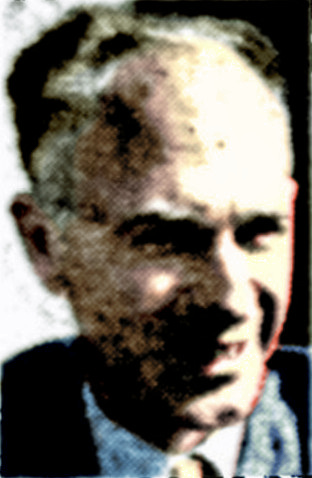The Pittsburgh Press (December 30, 1942)

Roving Reporter
By Ernie Pyle
Oran, Algeria – (by wireless)
If you want a touch of native life in your North African stories, here’s a little example.
Lt. Nat Kenney, of Baltimore, had an old broken-down motorcycle that he rode about the country. One day he took off for Arzew, about twenty miles from his camp. He passed a monstrous-looking lizard lying on the pavement, so he stopped and went back.
The lizard was about a foot long, plus six inches of tail. The thing kept changing color. Its eyes could move separately, and in any direction. It was an evil-looking customer indeed. Nat poked it gingerly with his shoe, but it didn’t attack him. Then he poked it with his gloved hand, and still it didn’t try to bite. Then he stuck his hand in front of its nose, and the lizard crawled up on the glove, just as if it had been waiting for Nat all the time.
Lizard hat-band
So Nat held still and the lizard continued its crawl – up his arm, over his shoulder, up the back of his neck and clear to the top of his head. There it curled up, resting on the top of his cap and looking forward snakelike over his brow. Nat, crowned with this dragon, got back on his motorcycle and rode into Arzew.
He parked the motorcycle and walked down the street. He kept running into soldiers he knew. They would start to salute, and right in the middle of the salute their mouths would fly open and they would gurgle out:
Lieutenant, for God’s sake don’t!
Nat had dinner with the lizard still poised comfortably on top of his head, spent a pleasant hour walking around the town and startling his friends, then got back on the motorcycle and rode back almost to Oran. Finally, he stopped at a field hospital where he knew some of the doctors. He left his friend there for them to experiment with.
‘I’d like a stripe’
Altogether the lizard spent about three hours and rode about thirty miles on top of Nat’s head. The army began to think of transferring Lt. Kenney to Iceland for fear he would go riding to town next with a camel on his handlebars.
A local French newspaper had a small piece from America recently saying – if I read it correctly – that the maximum age for induction into the U.S. Army had been lowered from 45 to 37. That’s good news to us old duffers who fled America to escape the draft, but they might have decided it a little sooner.
The next time I have dinner with Gen. Eisenhower (what next time?) I’ll have to speak to him about this business and tell him to get busy. I’d kind of like to sport a few stripes myself. I’m due for a six-months foreign stripe already, and although I haven’t been wounded and don’t expect to be, they might give me a stripe for being awfully tired.